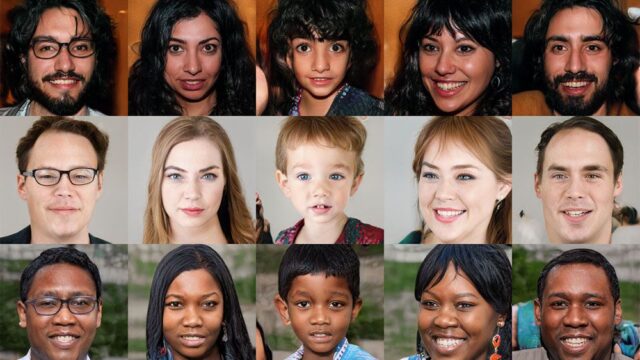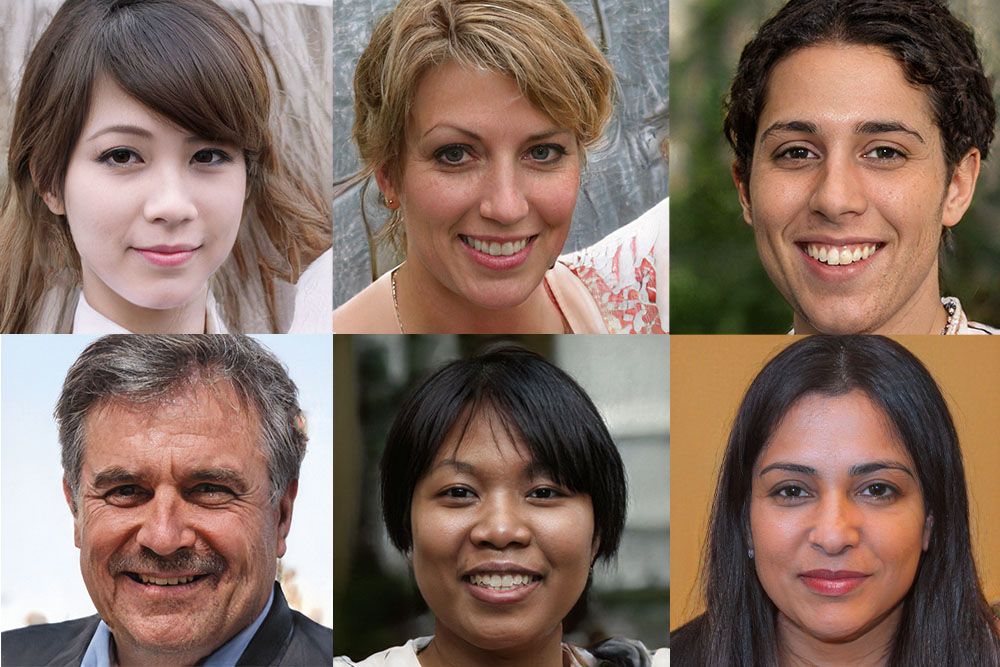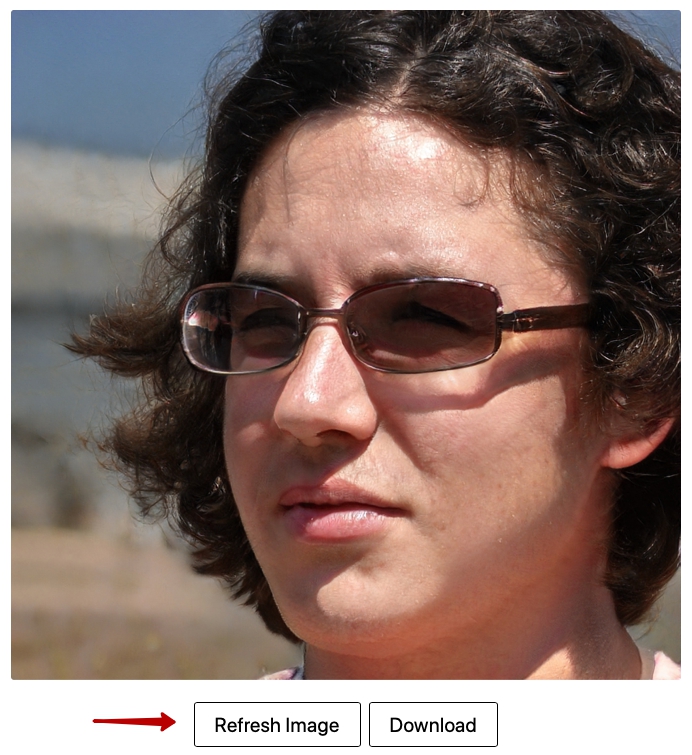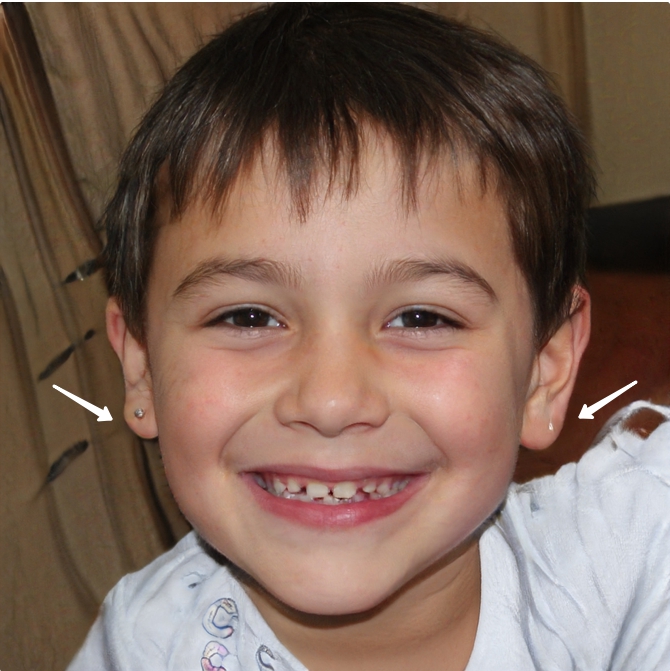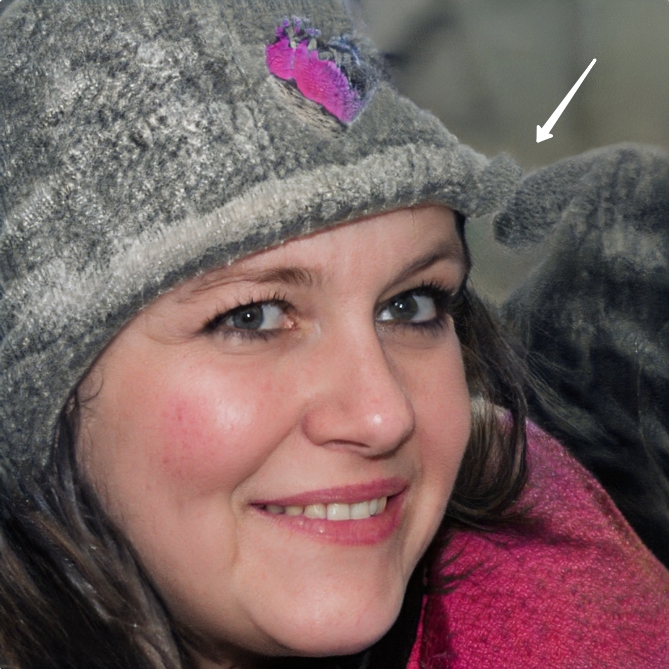That person does not exist
That person does not exist
That person does not exist
AI Face Generator
Using the most advanced model of image generation, this AI-powered face generator produces photos of people who do not exist at a resolution of 1024×1024 pixels.
The photos are produced by a generative adversarial neural network (GAN) that became capable of drawing them after being trained on an open-source dataset of more than 70 thousand photos.
The photorealism of this model is the state of the art in terms of photo quality of artificial-created people.
Tags: ai face generator, fake face generator, random face generator, random people generator
How it works
This person does not exist uses a powerful image generator built with artificial intelligence by NVIDIA. It is currently the most realistic generator in the world at the resolution of 1024×1024 pixel.
Images are producers by a GAN (Generative Adversarial Networks). A GAN consists of two neural networks placed in front of each other. One learns to draw images, while the second corrects it, until the quality of the generated image is optimal.
The power of Latent Space
Gans create their own internal world called latent space, which is nothing more than a giant 100-dimensional space. Through this they can merge concepts, mix styles, and learn to redraw photos.
Latent space is the space in which all possible data points reside. A latent space is lower dimensional than the data space and is defined by a set of basis vectors. For example, if we have a set of images, the latent space would be the set of all possible images that could be generated by the system.
In a GAN, the latent space is the space in which the generator operates. The generator is a function that takes in a noise vector and outputs a data point. The latent space is the set of all possible data points that can be generated by the generator.
Latent space is important because it allows us to control the data that is generated by the GAN. For example, if we want to generate images of faces, we can train the generator to operate in the latent space of faces. This will ensure that the generated images are of faces and not of other objects.
Who owns rights for the image?
When it comes to neural networks and AI-generated images, the question of who owns the resulting image is a complicated one. In most cases, the ownership of the image will depend on who created the original training data set that the neural network was using to learn. For example, if a company creates a neural network and trains it on a dataset of images that they own, then the company would likely own the resulting images as well.
However, there are some cases where the ownership of the generated images may be less clear. For example, if someone creates a neural network and trains it on a dataset of images that is publicly available, such as the ImageNet dataset, then the ownership of the resulting images may be less clear. In this case, it is likely that the person who created the neural network would own the generated images, but there may be some debate about this.
Ultimately, the question of who owns a generated image by AI is a complicated one, and the answer will likely depend on the specific circumstances under which the image was generated.
It may help you to read the license of these images are relased. Read full license.
Full body generator
Neural networks are one of the most popular methods for generating full body models of people from images. There are a few reasons for this. First, neural networks are very good at learning from data. This means that they can learn to recognize the features of a full body from a dataset of 140k images much better than other methods. Second, neural networks are fast. This means that they can generate a full body model in a fraction of the time it would take other methods. Finally, neural networks are very flexible. This means that they can be used to generate full body models from a variety of different datasets.
There are a few things to keep in mind when using neural networks to generate full body models. First, the dataset must be large enough to contain a variety of different body types. Second, the neural network must be trained on a variety of different body types. Third, the neural network must be able to generalize from the dataset. This means that it must be able to learn to recognize the features of a full body from a small number of images.
Random Cats Generator
Neural networks are a type of machine learning algorithm that are used to model complex patterns in data. In recent years, neural networks have been used also to generate images of cats that do not exist.
This is possible because neural networks are able to learn the relationships between different pixels in an image and how they contribute to the overall image. When given a new image, the neural network can generate an image of a cat that looks similar to the input image.
However, it is important to note that the generated images are not perfect copies of the input image. There may be some differences in the generated image, such as the size or position of the cat.
How we treat your data
This website does not maintain any data of the visitors. We do not collect any information except the one for statistical purposes. We do not store any information about our visitors nor use any information about our visitors.
Хоть на паспорт: нейросеть создает лица, которых никогда не существовало
В сети появился необычный ресурс: с помощью нейросети он мгновенно генерирует лица людей, которых никогда не существовало. В соцсетях тут же подхватили идею и стали создавать несуществующих котов, героев аниме и других персонажей. Подробности — в материале RTVI.
Американский разработчик графических процессоров Nvidia 10 февраля представил алгоритм StyleGAN, который с помощью нейросетей может создавать новые изображения. Компания опубликовала исходный код алгоритма в открытом доступе, чтобы все желающие могли «натренировать» его на собственном компьютере.
Алгоритм StyleGAN позволяет создавать несуществующие лица, используя при этом черты лиц реальных людей. Все атрибуты, например, улыбку, морщины и волосы он подгоняет в соответствии с нужным полом и возрастом человека на картинке.
Через несколько дней программист Uber Филлип Ванг на базе разработок Nvidia создал сайт ThisPersonDoesNotExist, который моментально генерирует лица людей, которых не существует. «Я решил покопаться в собственных карманах и повысить осведомленность общества о такой технологии», — написал он в своем фейсбуке.
Программист отметил, что человеческий мозг способен распознавать лица людей лучше любых других образов.«Поэтому я использовал именно эту предварительную модель», — рассказал он, отметив, что разработчики также представили модели для генерирования изображений кошек, автомобилей и спален.
При переходе по ссылке не экране сразу появляется лицо несуществующих женщины и мужчины. Чтобы получить новое изображение, нужно обновить страницу браузера. Несмотря на то, что полученные персонажи действительно выглядят как обычные люди, некоторые изображения получились не очень реалистичными.
Тем не менее план Ванга сработал: благодаря его сервису кодом Nvideo заинтересовалось множество интернет-пользователей. При этом алгоритм они применяли по отношению к самым разным картинкам — от изображения котов до анимэ-персонажей.
Один из пользователей твиттера поделился роликом о том, как алгоритм справился с обработкой анимэ-героев.
Другие опробовали исходный код Nvidia на кошках.
The new StyleGAN code is super neat. You can cross-breed latent vectors to get a sort of style transfer effect. pic.twitter.com/TXWzcZjai9
У кого-то получилось не так изящно.
Некоторые решили «поиграться со шрифтом».
#LatentFonts as the next iteration of #VariableFonts? Tried #StyleGAN on a 50k fonts dataset collected by @fulhack — Now I’m stuck watching this loop pic.twitter.com/UKCexhJKiF
А кто-то пропустил через алгоритм целую библиотеку мировой живописи.
On random interpolation, the truncated latent space also looks surprisingly continuous & morphologically coherent. pic.twitter.com/4d55xylLyU
Любители современного стрит-арта поэкспериментировали с граффити.
Через алгоритм пропустили даже архитектурные изображения.
We got our first result for training StyleGAN with gothic architecture dataset of
80k hand picked images. Really exciting! pic.twitter.com/ijpVHOpe9z
Один из пользователей решил с помощью алгоритма заставить улыбнуться Дональда Трампа.
«StyleGAN encoder, from real images to latent representation» Make Trump smile again The latent representation of the encoder can be moved along some direction in latent space, e.g. «smiling direction» and transformed back into images by generator. Link: https://t.co/5AfQNYMark pic.twitter.com/UFxXiWJbD8
Автор одного из аккаунтов рассказал, что загрузил фотографию несуществующей девушки через сервис по поиску похожих лиц. Как ни странно, сервис нашел несколько девушек.
Генератор Случайных Лиц (Этот Человек Не Существует)
Генератор поддельных портретов
Люди, как правило, не задумываются о влиянии, которое нейронные сети оказывают на нашу жизнь, потому что обычно мы видим результат их работы, а не «лицо» нейронной сети. Возможно, именно поэтому генератор поддельных фотографий стал главной темой обсуждения в течение нескольких недель в средствах массовой информации, посвященных технологиям, в конце 2020 года. Не все смогли догадаться, что ИИ может за пару секунд сгенерировать реалистичное лицо несуществующего человека. Поддельные портреты выглядят очень реалистично, и это пугает. Если ИИ может создавать для себя лица и может писать тексты, как настоящие люди, то что будет дальше?
Генератор фальшивых лиц несуществующих людей
Речь идет о веб-сайте thispersondoesnotexist.com («этот человек не существует точка com») и собираются рассказать об истории и областях применения. Способ работы генератора будет объяснен далее.
Генератор лиц ИИ работает на базе StyleGAN, нейронной сети от Nvidia, разработанной в 2018 году. GAN состоит из 2 конкурирующих нейронных сетей, одна из которых что-то генерирует, а вторая пытается определить, являются ли результаты реальными или генерируются первой. Обучение заканчивается, когда первая нейронная сеть начинает постоянно обманывать вторую.
Интересным моментом является то, что создание фотографий несуществующих людей было побочным продуктом: основной целью было научить ИИ распознавать фальшивые лица и лица в целом. Компании это было необходимо для повышения производительности своих видеокарт за счет автоматического распознавания лиц и применения к ним других алгоритмов рендеринга. Однако, поскольку
код StyleGAN находится в открытом доступе, инженер Uber смог взять его и создать генератор случайных лиц, который потряс Интернет.
О генераторе
Для пользователя все работает очень просто. Как только вы попадаете на сайт, генерируется случайное лицо. Вы можете скачать картинку, если хотите. Обновите страницу, если вам не нравится человек, с которым вы встречаетесь. Если вы видите то же самое лицо, просто подождите пару секунд и снова обновите страницу. На веб-сайте показаны результаты работы генератора (которые обновляются каждые 2-3 секунды), а не сам генератор.
Как распознать изображение фальшивого человека
Почти невозможно распознать изображение фальшивого человека. ИИ настолько развит, что 90 % подделок не распознаются обычным человеком, а 50 % не распознаются опытным фотографом. Услуг по распознаванию не существует. Иногда нейронная сеть допускает ошибки, из-за чего появляются артефакты: неправильно изогнутый узор, странный цвет волос и так далее.
Единственное, что вам нужно сделать, это присмотреться повнимательнее: системы визуальной обработки у людей намного сильнее, чем у компьютеров, поэтому подделку можно распознать по обнаружению.
Джевин Уэст и Карл Бергстром создали веб-сайт под названием “Какое лицо настоящее”, который нацелен на то, чтобы научить людей быть более аналитичными в отношении потенциально ложных портретов. Прежде чем делать предположения о том, что человек на фотографии существует, необходимо рассмотреть несколько вещей.
Такие же неровные проблемы с зубами тоже довольно распространены. Ищите странные характеристики, такие как пиксели и повторяющиеся резцы. Накладные волосы, в общем, могут казаться с некоторым свечением вокруг них или выглядеть слишком прямыми и с прожилками, опять же, с видимой асимметрией.
Внимательно изучите предысторию. Если это подделка, она может включать необычные искажения форм и линий или иметь рваный внешний вид в целом. Кровотечение происходит в ярких цветах, которые выделяются на фоне головы фальшивого человека.
Еще одной отличительной особенностью алгоритма NVIDIA “StyleGAN» являются глянцевые “пятна воды”.
Random Face Generator (This Person Does Not Exist)
Generator of fake portraits
People tend not to think about the effect that neural networks have on our lives, because usually, we see the result of its work and not the «face» of a neural network. Perhaps that is why the generator of fake photos became the main topic of discussion for several weeks in the media devoted to technology at the end of 2020. Not everyone was able to guess that AI could generate a realistic face of a non-existent person in a couple of seconds. Fake portraits look very realistic and it’s frightening. If AI can create faces for itself and can text like real people, then what is going to happen next?
Generator of fake faces of non-existent humans
We are talking about the website thispersondoesnotexist.com («this person does not exist dot com») and are going to tell of the history and areas of application. The way the generator works will be explained further.
The AI face generator is powered by StyleGAN, a neural network from Nvidia developed in 2018. GAN consists of 2 competing neural networks, one generates something, and the second tries to find whether results are real or generated by the first. Training ends when the first neural network begins to constantly deceive the second.
An interesting point is that the creation of photographs of non-existent people was a by- product: the main goal was to train the AI to recognize fake faces and faces in general. The company needed this to improve the performance of its video cards by automatically recognizing faces and applying other rendering algorithms to them. However, since
the StyleGAN code is publicly available, an engineer at Uber was able to take it and create a random face generator that rocked the internet.
About the generator
For the user, everything works very simply. As soon as you are on the website random face is generated. You can download the picture if you want. Refresh the page if you don’t like the person that you are seeing. If you see the same face, just wait a couple of seconds, and refresh the page again. The website shows the results of the generator’s work (which are updated every 2-3 seconds) not the generator itself.
How to recognize an image of a fake person
It is almost impossible to recognise an image of a fake person. AI is so developed that 90% of fakes are not recognized by an ordinary person and 50% are not recognized by an experienced photographer. There are no services for recognition. Occasionally, a neural network makes mistakes, which is why artifacts appear: an incorrectly bent pattern, a strange hair color, and so on.
The only thing you need to do is take a closer look: humans’ visual processing systems are far stronger than computers’, so it is possible to recognise forgery by detection.
Jevin West and Carl Bergstrom created a website called “Which Face Is Real”, which is focused on teaching people to be more analytical of potentially false portraits. Before making suggestions that a person in a photo is existent, there are several things that need to be considered.
One of the most common ones is symmetrical issues, in particular eyeglasses and earrings.
Same uneven issues with teeth are quite common too. Look for odd characteristics like pixels and repeated incisors. Fake hair, in general, may seem with some glow around it or look too straight and streaked, again, with visible asymmetry.
Study background carefully. If it’s fake, it may include unusual distortions in shapes and lines, or have a torn appearance overall. Bleed-through occurs in bright colors that stand out from the background onto a fake person’s head.
Another distinguishing feature of the NVIDIA “StyleGAN algorithm” is glossy “water splotches”.
ИИ-генератор лиц — создание фотографий несуществующих людей
Generated.photos позволяет вам сгенерировать фотографию несуществующего человека. Генерация произвольных реалистичных лиц с помощью ИИ. Все портреты модельные. Вы можете генерировать необходимые вам фотографии в онлайне и использовать их в коммерческих целях.
Тема не нова, проект существует давно, но иногда очень полезен для определенных задач. Я бы сказал это единственный профессиональный инструмент для работы с генерированными ИИ лицами для коммерческих проектов.
Чем же хорош этот генератор?
От приложений, которые помогают людям проверять слепоту, до журналистов, защищающих личные данные, или даже корпоративных компаний, которые хотят продемонстрировать свое программное обеспечение клиентам.
Используя сгенерированное лицо, вы можете быть спокойны за авторское право и не обязаны будете выплачивать дивиденты человеку до конца жизни.
В UI-дизайне этот сервис можно использовать в качестве аватар для проекта.
Есть еще один интересный проект на эту тему. Разработчик Филипп Ван, когда-то работающий в Uber, создал сайт Thispersondoesnotexist.com — генератор лиц людей, которых не существует в реальной жизни.
Проект построен на решении StyleGAN, код которого компания Nvidia опубликовала в открытый доступ на GitHub. При каждом заходе на страницу создается реалистичный портрет человека. При этом все лица уникальны и ни разу не повторяются.
🙏🏻 Благодарю за внимание. Надеюсь этот материал был полезен для тебя.⚡ Не забудь подписаться на Email рассылку с лучшими материалами и на мой Facebook / Instagram / Telegram
Автор: Комаров Егор / Источник
Все это выглядит очень неплохо, но не могу придумать реально выгодного применения дальше, чем для сервиса ботоводов в образной телеге.
Привет, я — основатель. Хороший вопрос, который часто задают журналисты (Washington Post, BBC, New York Times, etc.)
В основном — это датасеты для машинного обучения. Сложно создать _сбалансированный_ датасет, где одновременно:
* 50% взрослых, 25% детей, 25% стариков
* По столько-то процентов разных национальностей
* По столько-то процентов эмоций, итд.
Мы это можем и продаем большим компаниям, которые у всех на слуху: https://generated.photos/datasets
Кроме того, их используют для исследований. Например, один университет в Техасе показывает разные лица с разными утверждениями и выясняет, какие из лиц вызывают доверие.





